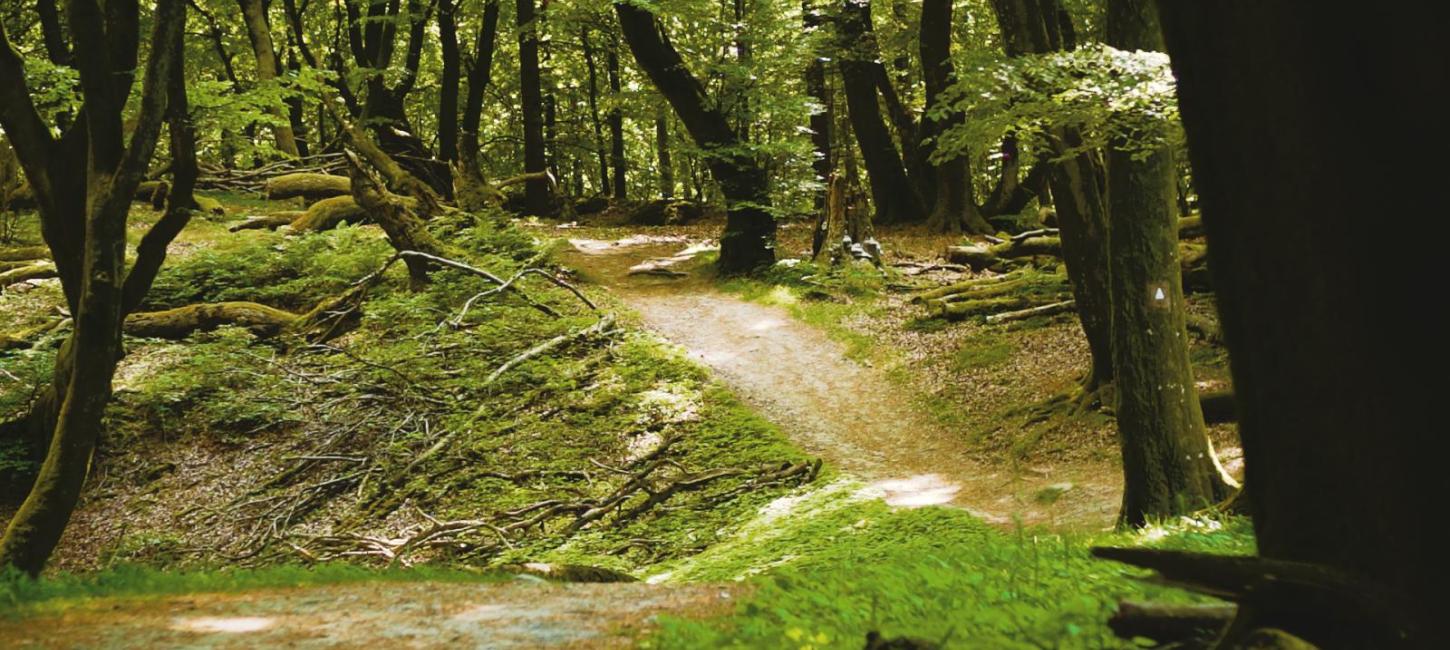
Rold Skov forest
Endless forest and magnificient views
Rold Forest is Denmark's largest connected forest, covering an area of 80 km2 or 8.000 hectares. The forest consists of various minor forests, each with their own name, such as Hesselholt Skov, Nørreskov, Nørlund Skov and Rold Vesterskov. Combined, the area is called Rold Skov.
Three large estates own 75% of the forest, while the remaining 25% is administered by The Danish Nature Agency.
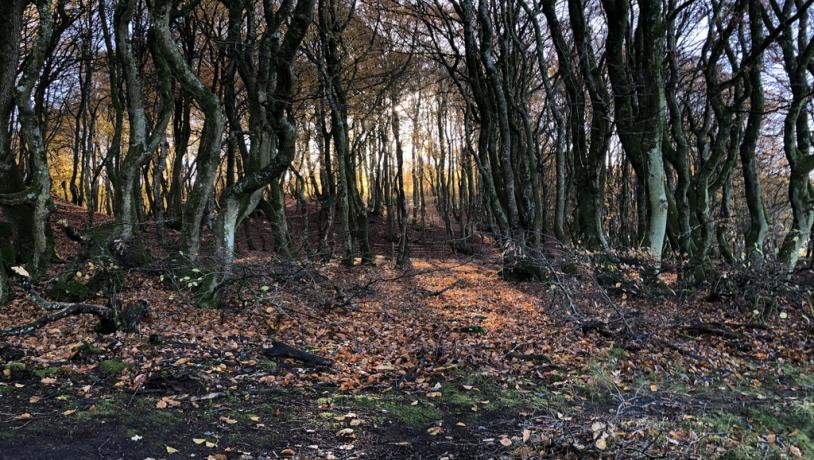
Photo:RebildPorten
The Trees of the Forest
Rold Forest is primarily coniferous forest. The sandy and gravelly moraine earth, combined with frequent rainfall, makes the area very suitable for the coniferous trees. The forest is known for its large and dense stand of old spruce and fir. Unfortunately, the forest was severely damaged and thinned out during a storm in November 1981, as more than 550.000 m3 of timber were literally put down by the wind.
Since 1850 many different species of coniferous trees have been planted. Besides spruce and scots pine, several North American trees have been planted, such as Douglas fir, Sitka spruce, noble fir and giant fir.
The story goes, that a forester named Hintz wanted to plant various trees, but his supervisor prohibited him from doing so. Nevertheless, Hintz planted the trees, which we can appreciate today. The trees have become an important part of the forest. If you want to see these impressive old giants, visit 'Jætternes Baghave'. It is located in Hesselholt Skov, close to Store Økssø.
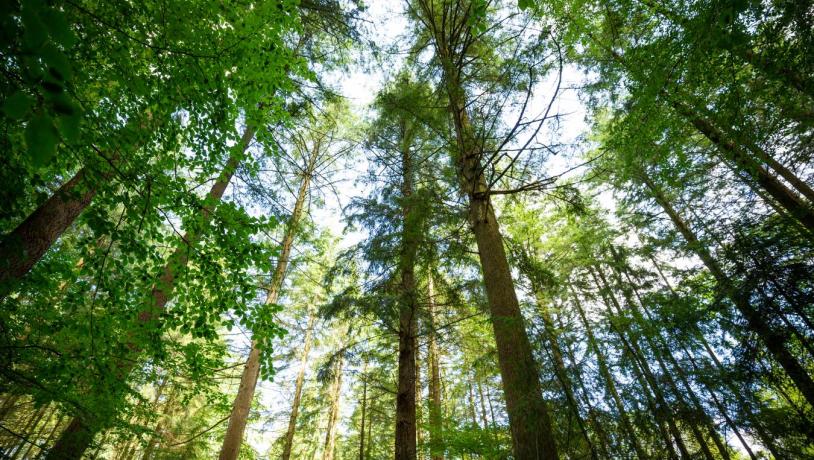
Photo:RebildPorten
While Rold Forest primarily consists of coniferous trees, an effort was made to safeguard some of the old, picturesque beech forest in the area. The largest stand of old-growth beech forest can be found around Rebild Bakker, the troll forest and the Old-growth Forest. In Rebild Bakker and in the troll forest, some of the beech trees have multiple stems and are twisted and crooked. Troldeskoven and Urskoven have been left untouched since 1992, meaning that the forest actually sustains itself. Consequently, it is not allowed to cut down trees or make any cultural intervention in these areas. Other natural forests such as Rebild Bakker are maintained as with forest grazing, where sheep and cattle run around free.
The former forester, Jens Hvass, desired to preserve the beautiful forest and at the same time develop it. The forest garden of Jutland was opened to the public in 1970. Here you can find more than 150 different species of trees and bushes from all over the northern hemisphere.
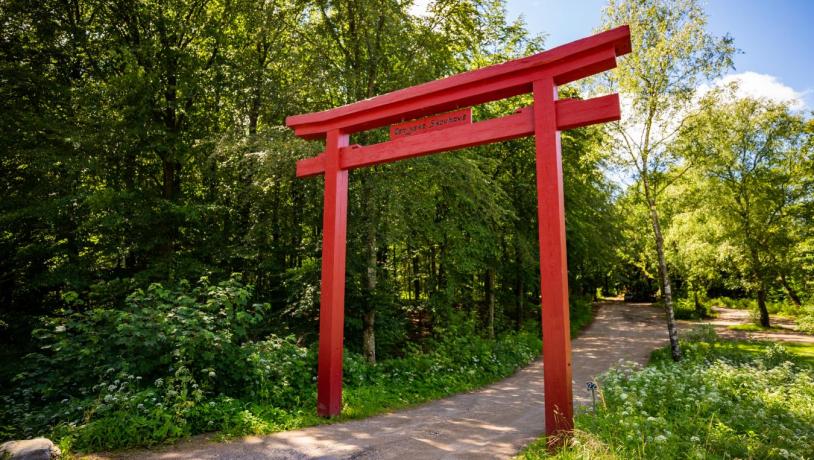
Photo:RebildPorten
The Exceptionel Nature of the Forest
The calcareous subsoil in Rold Forest is the explanation for the unusual geological phenomenon known as sinkholes. When rainwater seeps through the forest soil, the water becomes acidified with humic acids. The acidic water seeps through cracks in the soil and dissolves the limestone, creating an underground cavity, which one day may suddenly collapse. Sinkholes of 4-5 meters in diameter are frequently found, especially in Nørreskoven.
Hestegraven is one of the more famous and sizable sinkholes in the area. The name comes from an old tale, in which a horse-drawn carriage suddenly disappears into a hole in the ground. Another well-known sinkhole is the one called Røverstuen. Here, the story goes that the robbers from Rold used the sinkhole as a hide-out, laying in wait for travellers passing by.
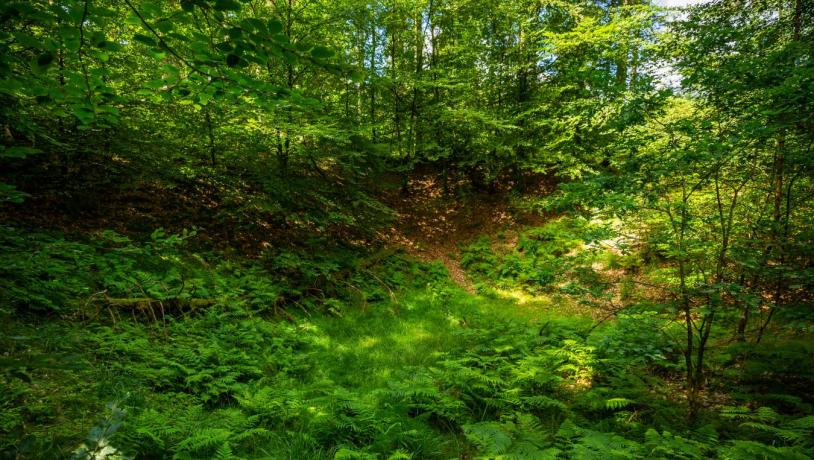
Photo:RebildPorten
Aside from the interesting geology, Rold Forest also has fascinating flora and fauna. In the forest you can find the very rare Lady Slipper Orchid, blue anemone and red helleborine. Furthermore, the forest is home to an abundance of wildlife, such as foxes, badgers, red deer, bats and birds. The flora and fauna of the forest can be experienced throughout the year.
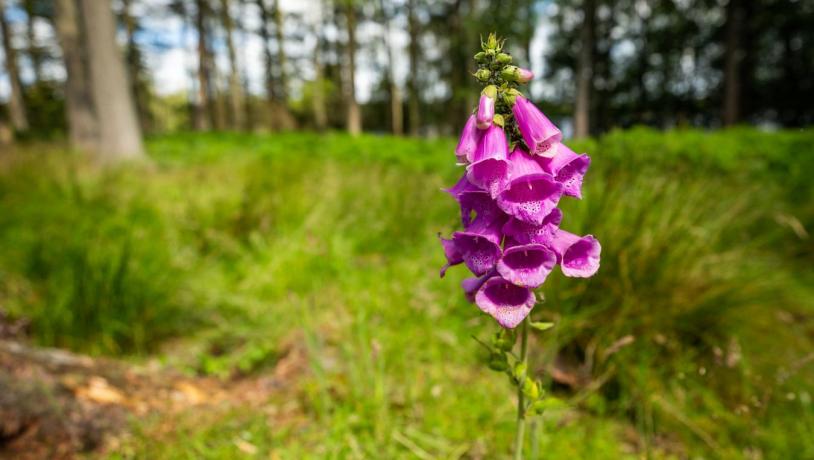
Photo:RebildPorten
History in Rold Forest
The forest has a rich history, dating back to the Neolithic Age and Bronze Age. Burial mounds and dolmen from these periods can be found in all parts of the forest, however, the highest concentration can be found around Bjergeskoven which is found north of Rebild. Some of the most impressive burial mounds are located here, such as Stenstuen and the two Bronze age mounds Svinehøjene.
In the forest you can find several old sunken lanes. Sunken lanes are formed by prolonged carriage traffic. If one stretch of the road became too poor or impassable, a new lane was made right next to the old one. The best known sunken lane in the area is Hulvejen, the road leading up to the tourist office RebildPorten.
Everywhere in the forest, you can find signs of charcoal making from the past. The extensive scale of charcoal making in Rold Forest required large quantities of wood, which contributed to a significant reduction of the forest. Today, only one local charcoal burner still practices traditional charcoal making. They make charcoal once a year, where the public is invited to watch and participate.